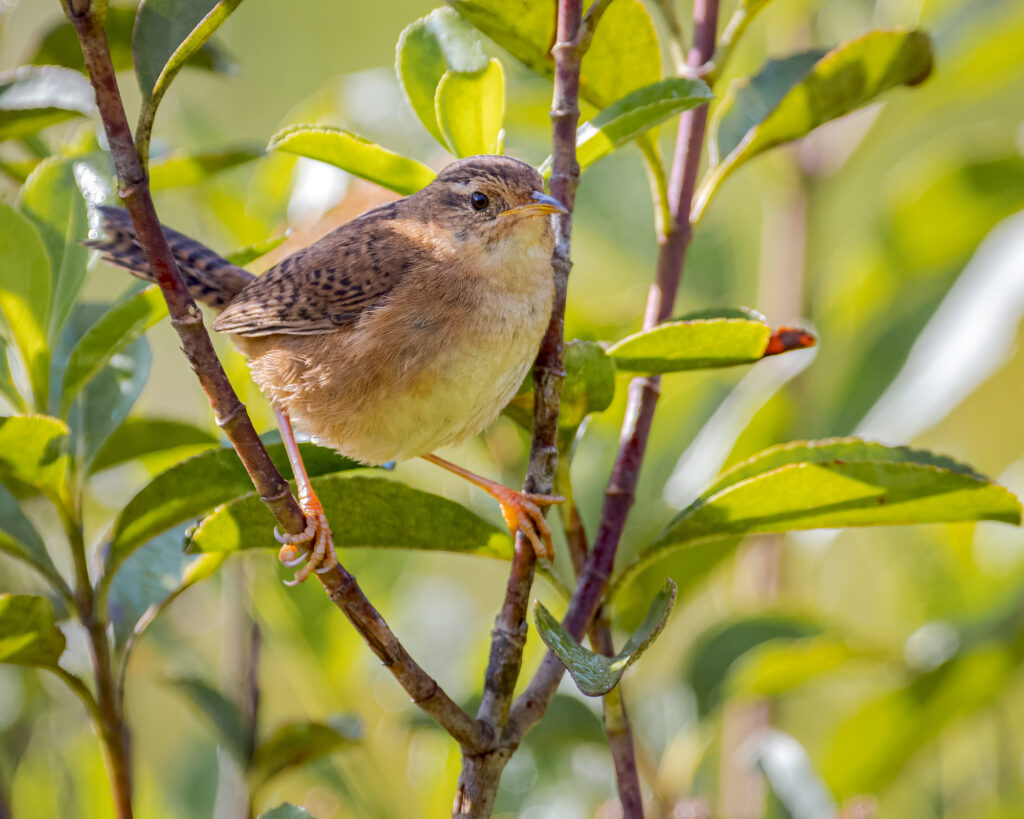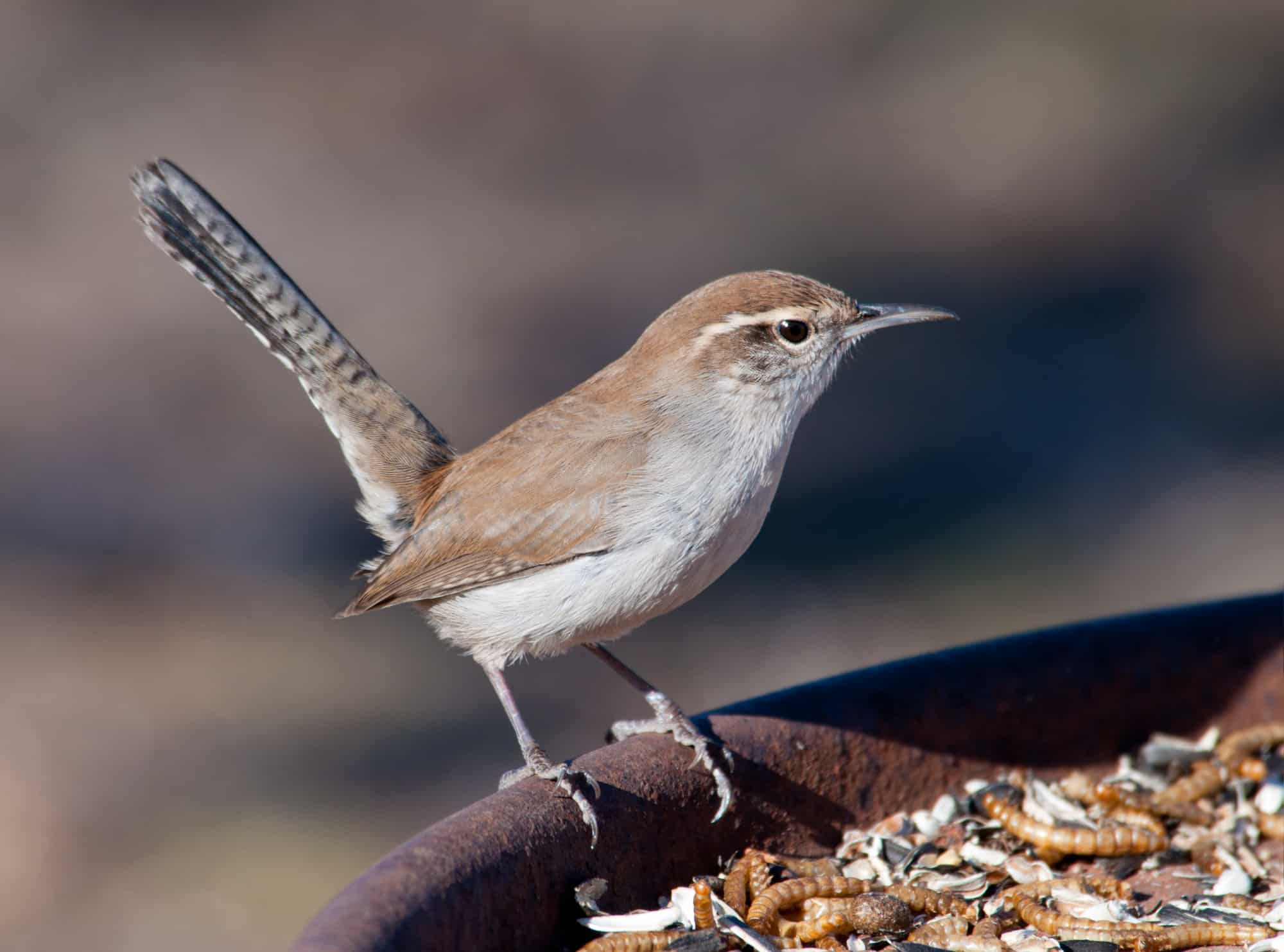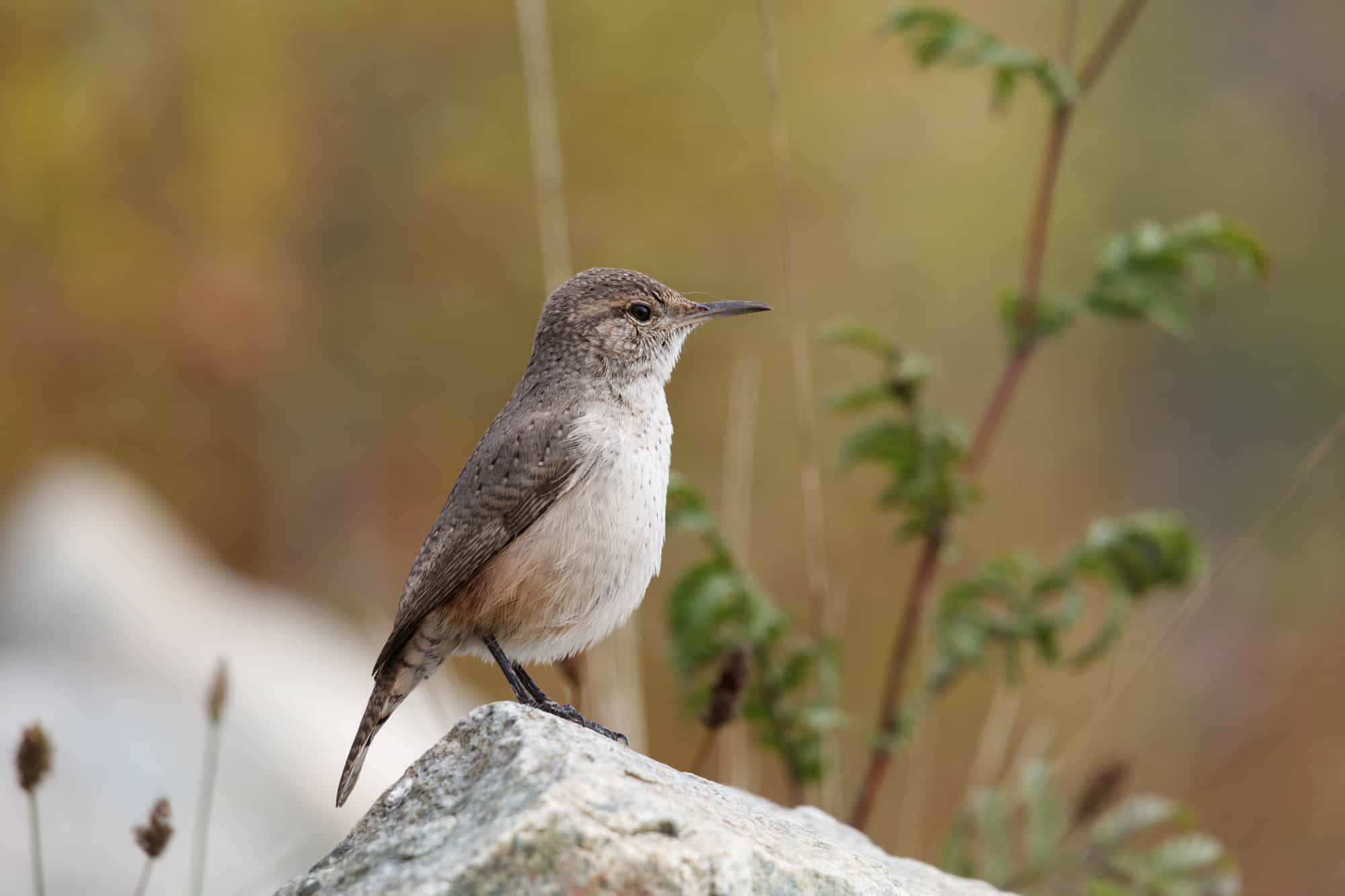Wrens are one of the most endearing songbirds in North America, so whether you’re an Indiana resident, or just passing through, we’re here to help you learn about every species you can see here.
There are 11 species of wren in the USA, and 7 of them can be found in Indiana. Although many of them are fairly rare here, the most common species can be seen every day.
Wrens are especially common in Indiana during the summer when all but one resident species breeds here. In the cooler months, only two species remain to stick out Indiana’s cold winters.
Wrens can be encouraged to visit your garden by leaving them some overgrown, weedy corners, and birdhouses to nest in or shelter in during cold weather.
Learning how to identify the different species can be a rewarding endeavor, and because wrens are such secretive birds, learning their songs is one of the best ways to do so.
If you’re already a birdwatching expert, you may already be able to guess all 7 species in Indiana. See how many you can get before scrolling down!
Wrens in Indiana, Starting With the Most Commonly Seen
Carolina Wren

- Scientific Name: Thryothorus ludovicianus
- Length: 4.7-5.5 in (12-14 cm)
- Weight: 0.6-0.8 oz (18-22 g)
- Wingspan: 9 in (23 cm)
Because they’re the only wren that remains in Indiana through the entire year, the Carolina wren is the most common in the state when summer and winter records are added together.
Unlike their migratory relatives, Carolina wrens are the only wren of the Eastern States to remain in the same territories throughout the year.
These large wrens are blessed with attractive features such as long white eyebrows, a white chin, and a buffy-orange belly. They can also be identified by their tuneful but repetitive song.
The charismatic Carolina wrens mates for life and will sometimes nest in birdhouses. They have a wide-ranging diet that includes reptiles, and they’ll sometimes visit backyard feeders, too!
House Wren

- Scientific Name: Troglodytes aedon
- Length: 4.3-5.1 in (11-13 cm)
- Weight: 0.3-0.4 oz (10-12 g)
- Wingspan: 5.9 in (15 cm)
House wrens are even more common than Carolina wrens during Indiana’s summers, but vacate the state for warmer southerly regions during the winter.
These slim, agile little birds are great fun to watch as they skip and hop their way through the undergrowth in search of insects and spiders. They also possess a loud bubbling song that will often alert you to their presence.
You can often attract house wrens to your backyard by offering them a suitable nest box. Even without the invitation, though, these cheeky birds will often take up residence in an old mailbox or perhaps a pair of boots hanging up in your garage!
The oldest recorded house wren was at least 9 years old when it was found again in New York State – the same state where it was originally banded.
Marsh Wren

- Scientific Name: Cistothorus palustris
- Length: 3.9-5.5 in (10-14 cm)
- Weight: 0.3-0.5 oz (9-14 g)
- Wingspan: 5.9 in (15 cm)
The third-most-common species of wren is a lot rarer than the first two. The marsh wren can only reliably be found in northern Indiana during the breeding season and is spotted by about 3% of bird watchers during this time.
True to its name, the marsh wren is exclusively a wetland dweller. Rarely seen anywhere without standing water, these territorial birds make their nests among dense marshy vegetation such as cattails, tules, and reeds.
Marsh wrens might just be the most aggressive member of a very feisty family! During the spring they’ll sometimes sing all night, and won’t stop short of destroying the nests of their rivals.
To observe these pugnacious birds in the wild, you’ll need a good pair of binoculars and a dedicated trip out to a marshland habitat towards Lake Michigan in the late spring or early summer. They can be seen briefly passing through the rest of the state during the spring and fall migration periods.
Sedge Wren

- Scientific Name: Cistothorus stellaris
- Length: 3.9-4.7 in (10-12 cm)
- Weight: 0.3oz (7-10 g)
- Wingspan: 4.7-5.5 in (12-14 cm)
The sedge wren is a bit like a smaller and more timid version of the marsh wren. Although they are closely related, the sedge wren has a shorter tail and less dark coloration than their larger relatives.
Appearance aside, sedge wrens also typically inhabit slightly drier terrain than marsh wrens. The upper reaches of a marshland or a damp meadow with long grass are the typical nesting grounds for these tiny birds.
The secretive nature and deft camouflage of the sedge wren make them an incredibly difficult bird to spot. To make matters more challenging, they’re one of the rarest wrens in North America.
While official reports suggest that their numbers are stable, scientists In Michigan are concerned that habitat loss could be having a detrimental effect on these rare birds. Still, small numbers of breeding pairs can be found throughout Indiana during the warmer months.
Winter Wren

- Scientific Name: Troglodytes hiemalis
- Length: 3.1-4.7 in (8-12 cm)
- Weight: 0.3-0.4 oz (8-12 g)
- Wingspan: 4.7-6.3 in (12-16 cm)
Winter wrens really are purely winter birds in Indiana, which is astonishing when you consider this bird’s tiny size and the state’s cold climate! Along with Pacific wrens, winter wrens are the smallest type of wren in America.
During the warmer months, these birds migrate to the Northernmost United States and Canada for breeding. Indiana is positioned at the northern edge of their winter range.
The round, plump shape of the winter wren must have evolved to help them survive cold climates and these normally solitary birds will also congregate in birdhouses during the coldest weather to stay warm!
The winter wren has one of the most impressive voices in the family. Amid a silent forest, the vigor and volume with which they sing their high-pitched trills might have you jumping out of your skin!
Bewick’s Wren

- Scientific Name: Thryomanes bewickii
- Length: 5.1 in (13 cm)
- Weight: 0.3-0.4 oz (8-12 g)
- Wingspan: 7 in (17.8cm)
If the Carolina wren is the Queen of The Eastern States, then Bewick’s wren is King of The West! Although these tiny birds are seldom seen this far east these days, they remain the most common wrens on the Pacific coast.
Bewick’s wren used to be frequently seen in the East, too, but in recent decades they’ve been reduced to a few isolated populations. While they still occasionally breed in neighboring Kentucky, Bewick’s wrens are hardly ever seen in Indiana anymore.
Different theories have been formulated for their decline, with some blaming the aggressive behavior of house wrens, and others citing habitat loss. Although these birds will happily nest in birdhouses, house wrens will often get there first.
If you do see Bewick’s wren in Indiana, it’ll likely be hopping around among tree trunks or flipping over dead leaves looking for insects. Try to get a photo and report any sightings to Indiana Audubon.
Rock Wren

- Scientific Name: Salpinctes obsoletus
- Length: 4.9-5.9 in (12.5-15 cm)
- Weight: 0.5-0.6 oz (15-18 g)
- Wingspan: 8.7-9.4 in (22-24 cm)
If you were to draw a line down the middle of America, the Western half would almost perfectly delineate the rock wren’s typical range. But while they can be found from Mexico to Alaska, they only venture this far east once in a blue moon.
One reason that rock wrens prefer the West may be the greater abundance of rocky habitats that these birds call home.
If you would be lucky enough to see a rock wren in Indiana, it’d probably be atop a rock pile, bouncing up and down, singing its buzzy, repetitive song. They are paler in color and also have a longer bill than any other wren found here.
As with Bewick’s wren, spotting a rock wren in Indiana is a noteworthy event, and should be reported to Indiana Audubon.
Conclusion
Spotting wrens in Indiana is a highly seasonal affair. Most species only come here to breed during the summer, whereas just two species can be seen during the winter. Making your backyard a more welcoming place for wrens is an excellent way to see them more often.
Apart from wrens, there are hundreds more beautiful and fascinating birds to be seen in Indiana. Don’t miss our guide to the best of them, here.

